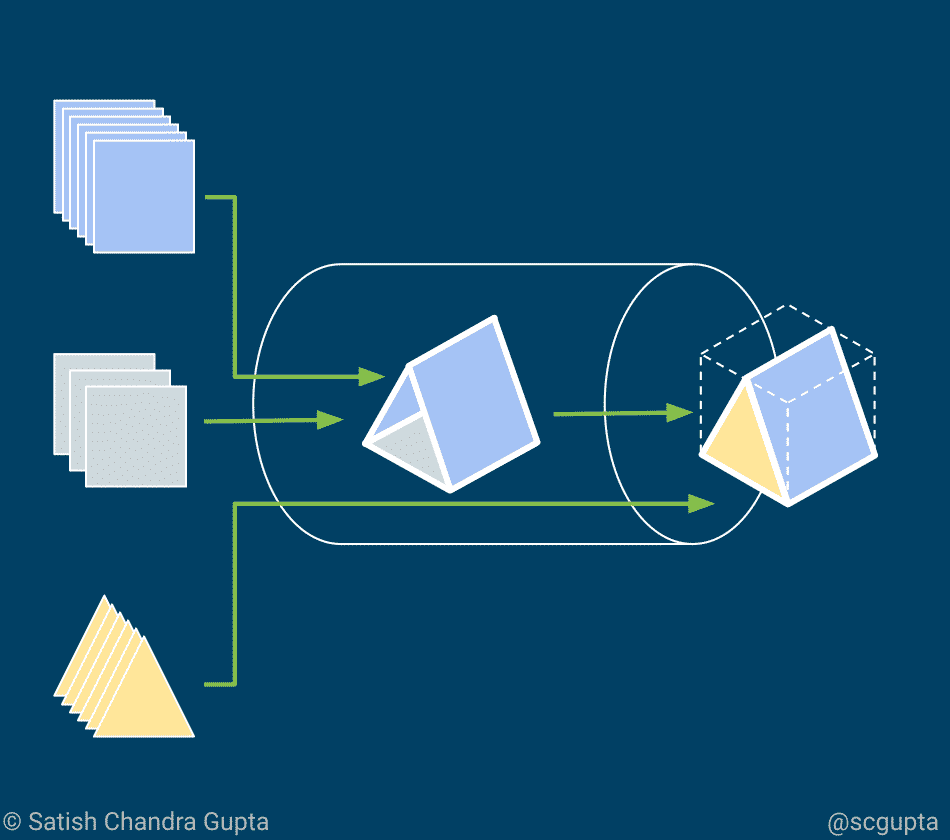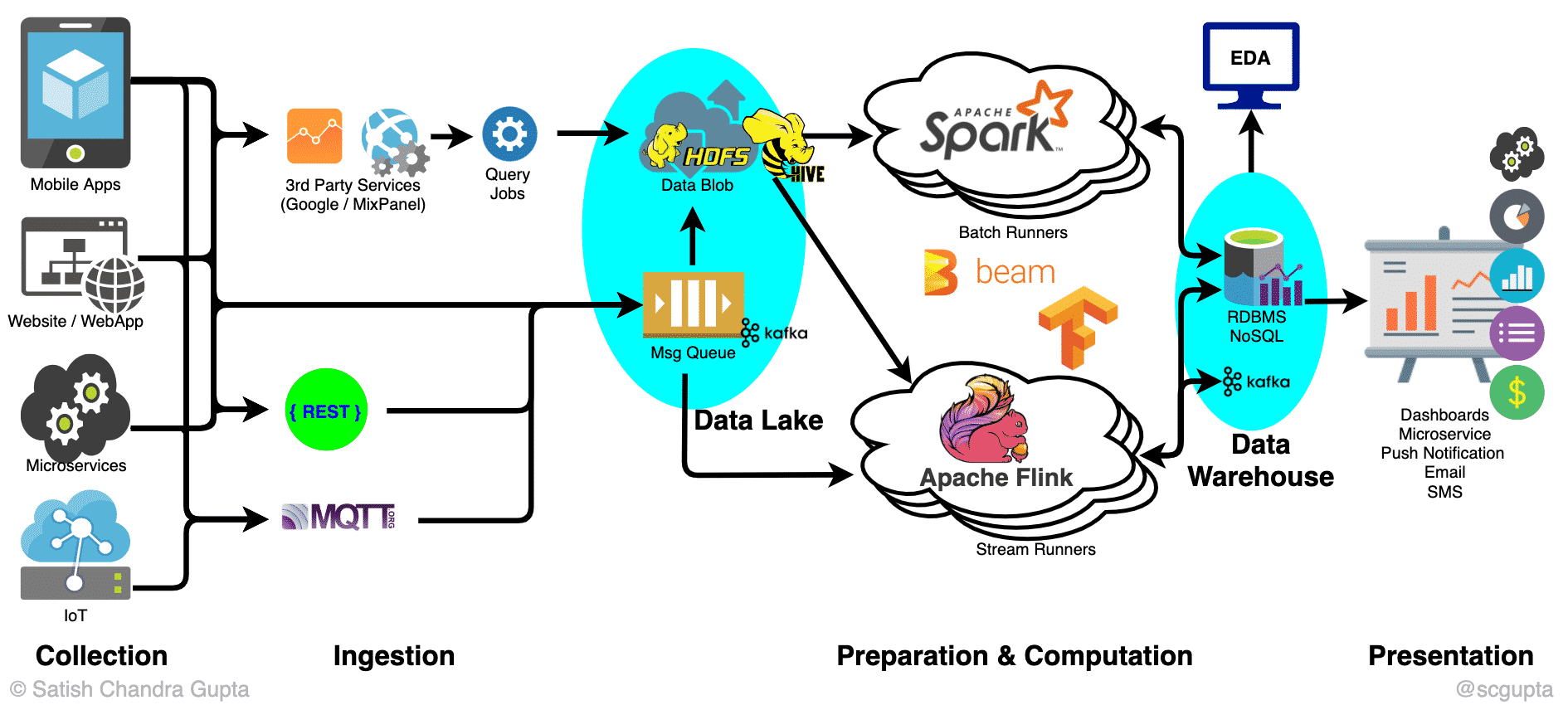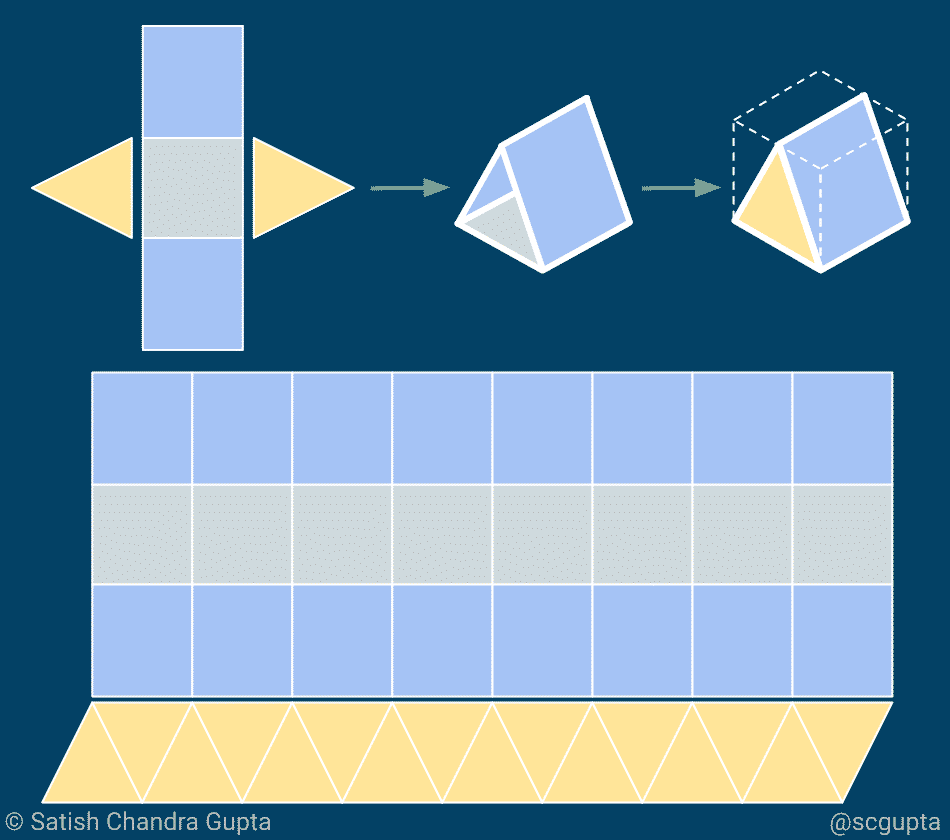Scalable and Efficient Data Pipelines
Only 25% of the entire work involved is spent on machine learning applications, big data analytics, and data science deployment in the real world. 50% is dedicated to the purposes of preparing data for analytics and machine learning, while the remaining portion is dedicated to making the insights and conclusions drawn from models easily absorbed on a large scale. The data pipeline then puts it all together. The data pipeline is fundamentally what makes machine learning work. There can be no long-term success without it.
The following four principles are pivotal to understanding the data pipeline and alternative big data architecture:
Perspective
Pipeline
Possibilities
Production
Continue reading to learn more about each of these ideas.
Perspective
When it comes to developing data analytics and machine learning applications, three key people are involved: data scientists, engineers, and business managers.
The data scientist’s job will be to discover the most powerful and cost-effective model to tackle a particular problem utilizing the data available.
The engineer, on the other hand, will use creative thinking to create something new and dependable, or to find ways to improve existing models.
Finally, the business manager is in charge of utilizing science and engineering to provide clients with something of tremendous value.
- Accessibility – data must be easily accessible to data scientists for hypothesis evaluation and model experimentation
- Scalability – the ability to scale as the data amount increases while keeping costs low
- Efficiency – data and machine learning being ready within a specified time
- Monitoring – automatic alerts about the health of the data and the pipeline
Pipeline
It’s impossible to discern the full extent of data value. Only when data is transformed into actionable information and provided quickly can its true value be realized.
Enter the data pipeline.
This is the master constructor which connects the whole operation from start to finish. It starts with gathering data, transforming it into actionable insights, training a model that generates new insights, and then applying these insights to the model to guarantee that business goals are accomplished in areas where action is required.
A data pipeline has 5 stages grouped into 3 heads:
- Data engineering: collection, ingestion, preparation (~50% effort)
- Analytics/Machine Learning: computation (~25% effort)
- Delivery: presentation (~25% effort)
Data Lake vs. Data Warehouse
The term “data lake” refers to all data in its original state. This is usually in the form of segments or files. The date warehouse refers to data that has been cleaned and converted along with catalog and schema. Structured, semi-structured, binary, and real-time event streams data can be found in both the data lake and the data warehouse.
Physically, the lake and the warehouse can be placed in various locations, but this is optional. An interface that allows the warehouse to be materialized over the lake can also be used. This is determined by the speed needs as well as the budget limits.
Exploratory Data Analysis
Exploratory Data Analysis is a technique for examining and visualizing data sets in order to generate hypotheses. This procedure aids in the identification of discrepancies in gathered data, the collection of fresh data, and the confirmation of hypotheses.
EDA can be sped up if your Data Warehouse is well-maintained with catalogs, schema, and query language access.
Possibilities
You must ask yourself a few questions in order to make the best decision while selecting the most appropriate architectural solution:
- Do you need real-time insights or model updates?
- What is the staleness tolerance of your application?
- What are the cost constraints?
After you’ve answered these questions, you’ll need to consider the Lambda Architecture’s batch and streaming processes.
Lambda Architecture is comprised of 3 different layers:
- Batch layer: offers a high output rate and extensive, low-cost map-reduce batch processing, but at the cost of increased delay
- Speed layer: real-time stream processing is available, but at a higher cost, and with huge data volumes, memory limits may be exceeded
- Serving layer: when batch processing output is ready, it is combined with stream processing output to produce broad results in the form of pre-computed views or adhoc queries
This picture depicts the open-source technology that is utilized to create all of the phases of the big data pipeline.
There are key characteristics that constitute big data technology and architecture, regardless of whichever you choose:
- HTTP/MQTT Endpoints for data consumption, as well as delivering of results. Many frameworks and technologies exist for this.
- Pub/Sub Message Queue for consumption of streaming data in high volumes. Kafka is the existing choice in this regard.
- Low-Cost High-Volume Data Store for both the data lake and the data warehouse, Hadoop HDFS, or cloud blob storage such as AWS S3.
- Query and Catalog Infrastructure for data lake transformation to a data warehouse. Apache Hive is the favoured choice here.
- Map-Reduce Batch Compute engine for high throughput processing. Use Hadoop Map-Reduce and Apache Spark.
- Stream Compute for latency-sensitive processing. Choices like Apache Storm, Apache Flink, and Apache Beam are perfectly suited here.
- Machine Learning Frameworks for data science and machine learning. Popular choices here are Scikit-Learn, TensorFlow, and PyTorch.
- Low-Latency Data Stores for result storage. SQL and NoSQL data stores are typically used in this case.
- Deployment orchestration alternatives are Hadoop YARN, Kubernetes/Kubeflow.
The following factors influence scale and efficiency:
- Throughput which is determined by data consumption scalability, lake storage capacity, and map-reduce batch processing
- Latency which depends on message-queue efficiency, as well as databases and stream computation employed in result storage
Big Data Architecture: Serverless
Since the introduction of serverless computing, you can get up and running significantly faster by avoiding DevOps. As part of a cloud service provider, architectural parts can now be replaced by an equal serverless component.
Examples of serverless architecture of big data pipelines are Amazon Web Services, Microsoft Azure, and Google Cloud Platform.
Production
Extra caution is required during production. If the pipeline’s health isn’t monitored on a regular basis, it may eventually become unusable.
Operationalisation of a data pipeline isn’t easy. Here are some guidelines:
- Scale Data Engineering before scaling the Data Science team.
- Be industrious in clean data warehousing.
- Start simple. Start with serverle, with as few pieces as you can handle.
- Build only after careful evaluation. What are the business goals? What levers do you have to affect the business outcome?
Taking everything into consideration, we’ve come up with a few significant takeaways.
- Tuning analytics and machine learning models is only 25% effort.
- Invest in the data pipeline early because analytics and ML are only as good as data.
- Ensure easily accessible data for exploratory work.
- Start from business goals, and seek actionable insights.
Here at Chromesoft we understand the value and importance of data, not just the volume or quality of the data but the means in which you process this data and conduct superior data analytics. Using the correct means to process data can not only affect the results but it can ultimately affect the spend in data processing. We are certified partners of the Google Cloud Platform, and can assist you in moving your business forward.
For more information please contact us and let our team of experts assist you.




